SEND Perspective: Why is it important to introduce intersectionality conversations in UK schools? Exploring seven top tips to address it.
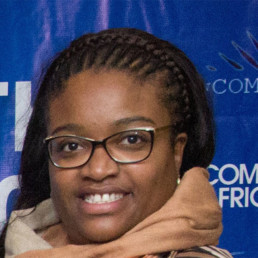
Written by Dilma de Araujo PhD (c)
SEND specialist. She has more than ten years of experience in education working in different educational institutions in the private and public sectors from early years to higher education levels, addressing special education needs; education policy research; gender inclusion and diversity.
‘A year nine boy of Black Caribbean heritage, claiming free school meals and with special education needs to represent a ‘typical’ student likely to be excluded from school.’
(Hawkins, 2019 p.14)
The Special Education Needs field involves a broad spectrum, where intersectional topics and issues such as gender, race and socioeconomic status are susceptible to emerge and often become a matter of great concern if the appropriate support and awareness initiatives are not in place. Hence, reflecting in the above statement by Hawkins (2019), it suggests that there are some significant points concerning financial, social and academic disadvantage and vulnerability indicators that should be addressed differently in our schools and educational institutions, raising awareness and incorporating a culture of dialogue, involving parents, carers and local communities actively in dynamic and creative activities in which different participants and agencies work in constructive partnership and collaboration (e.g. mental health and wellbeing practitioners; Local Authorities representatives, teachers, special education needs coordinators, local and national community activists and artists) aiming to improve not only black students, but all the multicultural and non-multicultural spectrum of school.
Thus, the role of schools, teachers and educational leaders can represent a crucial transformational factor. Hence, schools are designed to be a place where inclusion patterns and strong affinity bows of compassion, understanding and unity are consistently nurtured by adults, children and local communities. Aiming to generate diversity and equal dimensions within our multicultural society. To provide a healthy, safe and inclusive teaching and learning environments. Thus, school leadership teams have the responsibility to explore and address the following issues:
- Bias in the assessment process indicating over, under, misidentification and diagnosis;
- Rational parental response to historical discriminatory bias in the identification;
- Assessing migration’s resulting in different family health and cognitive endowments;
- Differential parenting behaviours and home learning environments;
- Differential experiences of deprivation between ethnic groups (Haye, 2021).
School senior leadership teams’ responsibility towards the implementation of an inclusive and diverse curriculum, programmes, initiatives and cultural activities in order to improve the multicultural perspective in their schools, taking into consideration students mental, cognitive, physical, emotional conditions, needs and circumstances raising the bars towards a positive learning performance and outcomes. In this line of thought, seven essential foundational strategies focus on the improvement of a culture of dialogue and reflective approaches concerning language, thoughts and actions, aiming to clarify different points of view and perspectives related to race, social, cultural inclusion.
Tip 1: Nurturing a culture of dialogue
Promoting dialogues involving racial matters in school can reduce bias, prejudice and pejorative attitudes. Thus, it is important reshape the teaching and learning approaches and behaviours may improve mutual respect, compassion, self and multicultural knowledge. E.g. cooperation involving students, teachers and other school staff. They can organize special pod-cast, webinars and school radio where life testimonials and experiences could address topics related to racial discrimination, macroaggressions and microaggressions.
Tip 2: Promoting reflection in and on action
Applying reflective practices to enhance teaching and learning is crucial to obtain valuable and effective results. Reflecting in-action provides the opportunity to explore and evaluate the academic practice and activities while the learning is taking place, opening the horizons not only for behaviour alignments and changings but also delivering and feedback strategies. Thus, promoting reflection-on-action practices is essential to improve the educational experience and activities built after interaction between teachers and students, mitigating biased attitudes and thoughts during teaching and assessment practices.
Tip 3: Preparing for and welcoming different perspectives
For many children and young people, teachers and school endeavours are the primary sources of information and knowledge. Hence, education institutions should be ready to face and address complex ways of think, behaviour and acting. To introduce potentially challenging conversations about race is essential to give quality training to teachers and staff, organizing regular meetings with parents and local communities and invest in multicultural representation in senior leadership posts in the educational organization.
Tip 4: Identifying students’ mental & emotional, cultural and traumatic journeys
The mental, emotional, cultural and traumatic journeys can impact and determine how children and young people absorb information and knowledge. Therefore, continuous evaluation, assessing, screening and reviewing students is vital to support teachers and students. Teaching practices can improve effectively when students’ needs are identified and properly monitoring based on child-centred approach, diverse curriculum, strong values and beliefs. Consequently, a positive impact can be generated in students’ performance, experiences and outcomes.
Tip 5: Encouraging the use of inclusive and diverse materials, resources and activities
The art of generating a culture of promoting human and racial rights, educational acceptance between adults and children, and constructing positive and dominant social and educational role models becomes the lynchpin of approaching complex topics. As a result, curricula, educational materials, schools’ displays and decorations, learning and leisure activities can be practical tools to combat the nature of privilege, supremacy and oppressive attitudes.
Tip 6: Exploring affective and embodied dynamic of learning
Starting from years early to higher education, recognizing and embracing the critical pedagogy in the daily schooling environment impacting teaching and learning practices through literature and other forms of creative arts aiming to explore and obtain the best of students’ ideas, beliefs, thoughts and aspirations. Learning dynamics could pass through a moment in which creative reflections are based on realistic expectations about a sense of identity, belonging, and existence, thus they could be co-related with all topics, disciplines and courses.
Tip 7: Creating a safe community learning environment
Local communities are an extension of the classroom and learning environment. It is crucial to the communication, interaction and mutual respect between school staff, local organizations and communities. Solid connections can be established through parents, governors and charities. It can help exchange experience, knowledge and update policies and general information.
In this context, addressing race paradigms and curriculum decolonization in the special education needs field can potentially represent a way to liberate bias, discrimination, preconceived thoughts, pejorative language. Additionally, all the changes and adjustments should be raised with the desire to generate productive and constructive empowerment by implementing effective anti-discrimination, SEND race and multicultural policies (also addressing migrants and refugee students). Thus, the field of SEND involving multicultural, race and education can essentially be empowered when individuals from different social, cultural, racial and educational backgrounds join forces not only to change policies but to be the ‘maker, developer and keeper’ of each one of them, aiming to embrace an open door of opportunities to nurturing the teaching and learning best practices.
Reference:
Hawkins, A. (2019) School Exclusion: The Parent Guide. London.
Haye. M, (2021). Special Education Jungle. Finding the racial minority voices in SEND. Retrieved [07/12/2021] from https://www.specialneedsjungle.com/finding-racial-minorityvoicessend/?utm_source=hootsuite&utm_medium=linkedin&utm_term=special+needs+jungle+ltd&utm_content=SocialOroMedia.
PjBL, (2020) Project Based Learning Toolkit. Retrieved [17/12/2021] from https://project-based-learning-toolkit.com/reflection/.
Thurber, A., Harbin, M.B, & Bandy, J. (2019).Teaching Race: Pedagogy and Practice. Vanderbilt University Centre for Teaching, Retrieved [07/12/2021] from https://cft.vanderbilt.edu/teaching-race/.
New Music Track Supporting the UK’s Leading Neurodiversity Charity and Celebrating Difference, Inclusion and Equality, in Education and Beyond

Written by Gary Grange
Consultant and neurodiversity advocate with a passion for supporting young people who are neurodiverse and working with NGO’s and businesses to create positive social impact.
On the 24th June the Neurodiversity charity the ADHD Foundation launch the Umbrella Project which for the first time ever will feature a new dance track called We Will Rise, by songwriter, rapper and neurodiversity advocate J Grange (ft London Community Gospel Choir)
This project aims to help raise awareness of the 1:5 people who are neurodiverse and to celebrate equality in society, especially for those who are neurodiverse, many experiencing inequality and struggling in the education system.
What is neurodiversity?
Neurodiversity refers to the different ways the brain can work and interpret information. It highlights that people naturally think about things differently. We have different interests and motivations, and are naturally better at some things and poorer at others.
Most people are neurotypical, meaning that the brain functions and processes information in the way society expects.
However, it is estimated that around 1 in 5 people (around 20% of people in the UK) are neurodivergent, meaning that the brain functions, learns and processes information differently. Neurodivergence includes Attention Deficit Disorders, Autism, Dyslexia and Dyspraxia.
J’s educational experience
J experienced an horrendous time in education. As a young person with ADHD, which was not diagnosed until weeks before he sat his exams, he was constantly excluded from school and eventually sent to a Pupil Referral Unit. This impacted on his mental wellbeing and he suffered severe anxiety, depression and even suicidal thoughts.
Sadly, teachers and schools just did not know how to support J. With around 1:5 young people thought to be neurodiverse the education system needs to change. It needs to embrace the “difference” neurodiverse young people bring and to have a strength-based approach to learning.
The current statistics are both shocking and show that 39% of children with ADHD have had fixed term exclusions from school and that children with ADHD have more than 100 times greater risk of being permanently excluded from school than other children.
Compare this to the fact that around 35% of businesses owners are neurodiverse and you can very quickly see that with the right support neurodiverse young people can be successful.
Schools, academy’s, colleges and universities are slowly beginning to change but they need help.
J’s track is about his journey but also a message of hope and a call to end inequalities and divisions. To watch the music video from the 24th June and to support the need for the education to be more inclusive for neurodiverse young people please click here
If you are a school, academy, college or university for more information about neurodiversity visit the ADHD Foundation Neurodiversity Charity online, or follow on Twitter, Facebook and Instagram
On Kindness: Intentionality, #DEIJ, and Difficult Decisions
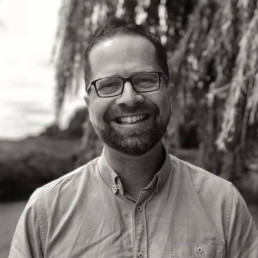
Written by Matthew Savage
Former international school Principal, proud father of two transgender adult children, Associate Consultant with LSC Education, and founder of #themonalisaeffect.
A few years ago, there was lots of talk about “random acts of kindness”, and many a school assembly took place across our schools, using that idea to encourage kind words and actions among and between staff and students.
However, I have since realised that kindness is never random. It is intentional. We make a conscious choice to be kind, or, conversely, not to be.
I reflected on this today, as a disabled, wheelchair traveller, treated like livestock at Madrid Airport: dumped in a corner and facing the wall, ignored, patronised and humiliated, and denied access to food, water or a bathroom, for 3 hours.
When finally pushed to the plane door, after every single able-bodied passenger and with minutes until take-off, I shared my experience so far, and then explained that I had mistakenly also been allocated a seat at the back of the plane, which I would not be able to reach without risk, pain, discomfort and delay, if at all.
I politely asked if the steward could request a passenger in a row further forward in Economy to swap with me, so as to avoid those things. They repeatedly, and emphatically, refused.
On hearing our conversation, a traveller in the very first Business row immediately stood up and insisted he swap with me and take my seat instead. The steward tried to persuade him not to do so, as he would lose his Business seat, but he made it quite clear that it did not matter, as my wellbeing and safety were more important.
I wish I could thank him properly. However, I suspect he would not mind. After all, when we intentionally choose kindness, we do so unconditionally and without expectation.
On the subsequent flight, I reflected further on this. In the leadership of our school communities, we also have the opportunity actively and intentionally to choose kindness, every single day – in our conversations and our actions; in policy and strategy; and in the decisions we make.
Sometimes this is easy, but when it feels difficult, we can and must still make that choice. We must ask ourselves what would be the kind thing to do. And then do that.
If kindness remains random, it will also be inequitably applied, and, in turn, perpetuate the marginalisation of those who need it most. Therefore, kindness should be at the heart of any #deij strategy too, and that strategy can help propagate intentional kindness as a result.
If we choose kindness, always, not only will kindness infuse the climate and culture of our schools, but others will follow our lead. Just like its absence, kindness cascades.
Does intentional kindness guide and permeate your school, or is it still random?
“Grandmotherly Duties” – Let Loose!

Written by Jackie Hill
An experienced teacher trainer, Jackie is a Founding Fellow of the Chartered College, Network Leader for WomenEdNW and Co-Founder / Strategic Leader for WomenEdNI.
NB This blog is suitable for all ages…
“Grandmotherly duties” – thoughts around this phrase have been rumbling in my head for some time. I’ve never been quite sure if, when or how I should share those rumblings and it was only on a recent trip to a “soft play” centre with my two favourite little learners that I decided it was time to “let loose”!
Firstly, I want to make it very clear that, in my experience, becoming a grandparent can be one of the best new roles that you can ever take on. However, I have been surprised to find that it can also bring an unwelcome “tag”…
Let me explain: in January 2019, both my husband and I moved to a more flexible working pattern (3 days a week) but the processes to arrive at that, and the perceptions regarding our motivations, were quite different.
For me, the consequence of my request for a more flexible working pattern, was that I had to accept a move to a new role, giving up the one that I had loved and had hoped to retain. Of course, this is a scenario which has faced many other women in education – I just had not expected it at that stage in my career. I had explained that I wanted to be more actively engaged in certain professional networks, interests and activities – all of which would actually have enabled me to carry out my workplace role even more effectively. These included DiverseEd, WomenEd (I’m Co-Founder and Strategic Leader in WomenEdNI and a Network for WomenEdNW), and The Chartered College (as a Fellow, and more recently Council Member).
Coincidentally I had become a grandmother a year beforehand and when the initial communications announcing the change in my professional role appeared, the focus had shifted. Yes, the explanation given for the move was that I wished to focus on other things, but only one was mentioned – “grandmotherly duties”! I was really taken aback as I felt it created such a false impression – so I asked for it to be changed immediately. And it was, straightaway, thankfully.
Now, anyone who knows me, also knows that I adore my grandchildren (more than one now!) and may be wondering why I would be so annoyed at this interpretation. Well, in my view it goes to the core of my identity or rather the way many people’s perceptions of identity change when they find out you’re a grandmother – you’re now “over the hill” / past your best / on the way out – too OLD! I subsequently discovered that one of my colleagues had a 4 year old much loved grandson but rarely spoke about him, for exactly this reason!
Of course, this is a reprise of something similar that many colleagues in education experience earlier in their careers when they are told “it’s time to just focus on being a mum”. However, when your children have grown up, you would think those judgmental assumptions would now be relegated to the past, so it’s a shock when they reappear in another way later in your career.
Jo Pellereau’s blog “Concentrate on Being a Mum” (and forget about work) outlines her experiences beautifully (Pellereau, 2020). Her assertion that “in many ways my commitment to education has been increased by my new identity as a mother” really resonates with me. My new identity as a grandmother has not only re-invigorated my commitment to education but has also taken it in new directions which have been both challenging and uplifting.
I asked my husband if anyone ever said to him “Now’s the time to focus on your “grandfatherly” duties”. His look of disbelief, said it all!!! Of course, they hadn’t!
This also got me thinking about “grandmotherly duties” – what are they? What could or should they involve…?
Of course, each grandparent’s circumstances are different, so there can be do fixed set of “duties”, job description or person specification for this role that would work for all. However, I’d like to share just a few grandparently duties that are important for me:
- Try to be a visible role model – for other grandparents, parents, carers and, of course, my family (especially the wee ones). Remain professionally active and involved, and, where possible, demonstrate that abilities, understanding, desire to keep learning and sharing do not have to cease to exist or be important, just because a person has this additional role.
- Continue to develop my “voice” to support schools and other education settings to become diverse, inclusive and equitable communities – where different families, like my grandchildren’s, and indeed all others, know and feel they belong.
- Look for ways to help my grandchildren discover the wider world outside their own little corner, so that they realise they are global citizens, and understand how that opens the world to them (as well as their responsibilities to look after it and one another).
- Help them to develop the joy of learning and also of reading all sorts of books (was it wrong of me to feel a little bit pleased when my grandson became upset recently because the library was closed!?!?)
- Spend time together and have fun.
What other “duties” have I missed? What would you add?
“DiverseEd; A Manifesto” feature in my day of grandmother duties because I took it with me to read at Soft Play! (Yes, I was the only Grandma doing that…) The wonderful Chapter on Age includes insightful stories and reflections of others, highlighting the underused and undervalued potential contributions that many older colleagues still have to offer. This also cuts across some of the other Protected Characteristics and, as the Editor for Chapter 4 “Marriage and Civil Partnership”, I’ve read, researched and reflected a lot about families and relationships, and firmly believe that ALL families should “experience the same positive environment, level of support, opportunities and VISIBILITY across the curriculum”. The fact that this includes families with, or even headed by, grandparents is sometimes missed.
So, in practice, how should that visibility work? In what ways could it break away from stereotypical images (rather than reinforcing them)? How should it be demonstrated through the staff in our schools and other educational settings too?
In reflecting on all of this, I’ve been reminded of the important role that my own amazing Gran played in my upbringing and her enduring influence on me. She lived with us and she was a wise, constant and loving presence, a cornerstone for our immediate, and indeed wider, family – while at the same time being an independent, working woman who read widely, and managed her own finances plus other responsibilities, whilst also supporting others. In her sixties, she travelled abroad for the first time, on her own, to Australia. She spent several months there, and wrote to us regularly to share her experiences – my brother still has the didgeridoo she carried back for him!
Similarly there are people like her today – who are ready to take on new challenges, to develop their professional and/or personal roles, and who are fit, willing and able to continue doing so. What a waste when we write them off, or high-handedly decide for them that it’s time to “focus on being a mother” or their “grandmotherly duties”. The choice should be theirs and roles need not be mutually exclusive.
Moreover, there is a clear case for employing older workers (Makoff A, 2021) – increased knowledge-sharing through a multi-generational workforce has been identified as a particular benefit. Makoff cites Stuart Lewis, founder of Rest Less (a digital community for the over-50s) who asserts that “demographic and societal changes including an aging population, delayed retirement and multi-generational workplaces will continue to be the direction of travel for a long time to come… the employers and HR teams that recognise this early, get ahead of the trend and embrace it early are going to be the workforces and businesses that thrive over the next decade.”
So I’ll leave you with some questions to consider:
- How do you view colleagues and others in your school community and/or education setting and/or networks who are grandparents (or are of an age that they could be grandparents)?
- Have you relegated them to the “former players” stand or are you making the most of their experience, expertise and possibly even renewed outlook and perspectives on education, learners and schools?
- How could you ensure that diverse families, relationships and roles are visible and valued in your classroom, staffroom / workplace and communications?
References
Pellereau J, (2020) Concentrate on Being a Mum. Available at: https://physicsjo.science.blog/2020/10/06/concentrate-on-being-a-mum/
Kara B and Wilson H (2021) DiverseEd: A Manifesto University of Buckingham Press
Makoff A (2021) How can employers embrace an age-friendly workplace Available at: https://dileaders.com/blog/how-can-employers-embrace-an-age-friendly-workplace-culture/
DEI in an International Setting
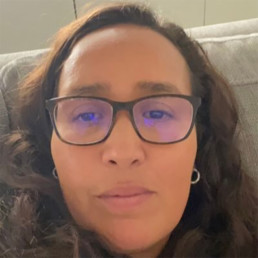
Written by Esther Mustamu-Daniels
Esther Mustamu-Daniels has 20 years of teaching experience working in London and the Middle East as a Class teacher, Education officer, Middle Leader and DEI Lead. Currently working at British School Muscat, Esther co-leads the DEI work across the whole school.
Many international schools are on or starting their journey of awareness of diversity, equity and inclusion. Because cohorts in these schools are so diverse by nature, often staff feel that there are no problems and that racism/discrimination is not a factor in the schools. This is usually very far from the truth.
Be brave; be vulnerable and start the challenging and honest conversations that are needed for change to take place.
Because of recent high profile events, diversity, equity and inclusion is a necessary space in all educational settings and that international schools, who send their alumni to universities all over the world, would do well to support, inform and equip students with knowledge and language to engage with the different topics around DEI.
How do schools start tackling, delivering and addressing these needs?
Start with the staff: build open conversations. It is important to know that not everyone is at the same place on their journey and also that there are different opinions. Gathering the ‘tone’ of your school as well as allowing safe spaces to share experiences is a key factor. What is important is that this is not only talk; action is also needed. This is an emotional and difficult journey so be sure to provide space and time to reflect and learn.
Action: Build a plan of how you will move forward. You may need to conduct a survey or gather some research and data from your school’s stakeholders to help you focus on what the priorities are in your specific setting. Are there specific needs or policies that need addressing first? This will help to focus on each step and also assign roles or tasks to specific people. This should be flexible so that it can be adapted along the way.
Leadership: Is there someone leading the work? Do SLT support and value the work being done? Does your leadership understand the why and how? This is important because without this it is extremely difficult to implement significant change. Leadership needs to take accountability for the work being done in their school. Is that person being paid?
Support: This is also an essential element. Who is supporting the people completing the work? Are they being emotionally supported as well as practically? The people leading or sharing this work may have been personally impacted or triggered by the issues raised; how are they being supported?
What is important to note is that action in any form is good and a positive step in the right direction. Addressing and tackling these issues will take time and for long lasting impact will need to be embedded in the culture of your school or environment. This is not a badge or a t-shirt; this is a cultural shift of readdressing mindsets.
If you are involved or starting up; learn, speak and support. Being an ally and everyone doing their part is imperative. There is so much work being done at the moment. Twitter is an excellent source of examples, webinars and organisations that can support you on your journey.
Queer Clubbing – Creating Intentional Queer Space in Educational Settings

Written by Edel Cronin
Secondary school senior leader and co founder of Bristol Queer Educators, very Queer and very Irish.
During my PGCE I had one lecture where the lecturer spoke about being a LGBTQ+ Educator. They spoke of their experience growing up LGBTQ+ in the 1960s onwards. One of the messages that stayed with me is the importance of Queer spaces for LGBTQ+ people. For that lecturer living in a society where there was active policing of LGBTQ+ lives, Queer people found ways to create space and community. Without these spaces LGBTQ+ people become isolated, lack space where their sexuality and/or gender is affirmed and don’t get an opportunity to learn their history.
During our school Pride last year, I spent a term doing all the usual things that it takes to help coordinate a school Pride. Our Pride events ended with a whole school Pride Day, as part of that day LGBTQ+ club had a lunchtime party where the focus was celebration. Students had a Pride Photobooth, we had music playing, the school canteen made rainbow cupcakes for the party, students dressed in rainbow colours and wore their LGBTQ+ flag like capes. While sitting in that room taking a moment to observe what we had created I realised that what was happening in that room, Queer Joy free from risk of homophobia or transphobia, this was the most important work I could do. If you have a regular space where you are free from the ‘risk assessment’ that comes with being a LGBTQ person+, a space where you can learn your communities history, share your favourite books or films that celebrate your lived experience and bask in the joy that comes with the freedom of being in a Queer Space, over time you will become more affirmed in your own self, you will be able to move around the world with the self-assurance needed in a society that tells us we shouldn’t exist.
Schools should absolutely spend intentional time and resources educating all the people in their community about LGBTQ+ history, provide anti-homophobia and anti-transphobia training and celebrate LGBTQ+ people. Doing so will help use build coalition between LGBTQ+ communities and those outside the community, reduce homophobia and transphobia and liberate us all from the burden of heteronormative stereotyping. However, it is also important that before doing this work school leaders have policies in place to support the work, provide staff and students with scripts on how to have difficult conversations and challenge homophobic and transphobic language. And provide space for Queer people in the building, should they want to access it, where they do not have to worry about being the ‘Gay Oracle’, experience homophobia, transphobia and risk assess how Queer they can be. For some people a virtual space will provide them with the best support, others will benefit from sign posting of networks or groups that exist outside of the school community and for others it will be having a physical space.
Ensuring that in person or virtually student and staff groups are available to LGBTQ+ people also allow Queer people the space to be surrounded by people who have similar lived experience that can provide or direct them to Queer inclusive support, learn about Queer stories and histories and experience the joy that is being Queer in a Queer space. It removes the burden that can come with moving from a Pride assembly to a classroom where you are only Queer person. By making intentional Queer spaces in educational setting, we are also making an active statement as Educators that we are taking up space in educational spaces that are traditionally positioned as a battle group for LGBTQ+ rights. Let us ensure that all our educational spaces move with intentionality to liberate and acknowledge loudly that Queer people have always been and will always be in educational spaces.
Why Are We Still Talking About Racism?
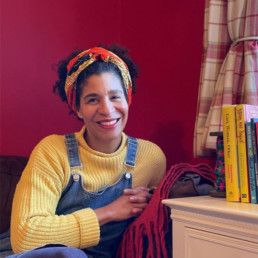
Written by Clare Francis-Slater
Clare Francis-Slater is a highly skilled and experienced primary school teacher, having taught for over twenty years in a wide variety of school settings.
Watching documentary shows about Racial issues on the television? Reading about it in our papers/magazines? Doing training days at work about it? Why is such a thing being made of it at the moment in the media? Doesn’t it make Racism more of an issue? Don’t we (liberal, nice, well-intentioned people) treat all people equally now anyway? Isn’t it better not to be pointing out and focusing on our differences? To not be talking about it – surely is better. Isn’t it?
I hear these types of comments from people from all walks of life – educated, well-meaning, good people, people I know well. These sorts of comments are borne from the ideological solution that grew out of the civil rights movement in America in the 1960s – it’s called ‘colour-blindness. It’s the idea that if we don’t talk about ‘race’ and ‘racial differences’, then ‘racism’ will just end. The fact is, we have all been brought up to believe that this is the best way to end racial discrimination and so have carried on like this, not ‘noticing’ differences … I think it’s fair to say, it hasn’t worked!
When people say, ‘I don’t see colour’ (of course they do) what they mean is ‘It doesn’t make any difference to me what colour you are’. However well-intentioned this sentiment is, it is also saying, ‘I don’t acknowledge your history and the racism you may experience living in a white-majority culture’. Having an outlook of ‘colour-blindness’ erases a person of colours past and the struggles and histories of their ancestors and also unintentionally seeks to deny them their unique identity.
A Black or brown person’s skin colour is part of them, it’s part of their identity, a connection to their history and the migration story of their own family. Rather than pretend we don’t see differences, we would do better to acknowledge and celebrate our differences, they are what make us all unique. We can acknowledge our shared inter-woven histories that have connected and bound us together over many hundreds of years – the (good?), the bad and the ugly. By doing so, it also allows us to celebrate the positive contribution to this country of people from its former colonies from post-war Britain and before.
We are still talking about ‘race’ because still in 2021, Black and brown people are still facing discrimination and inequalities across criminal justice, education, employment, health, housing and representation in the arts and media.
Facts:
For example, in the criminal justice system, Black people are around 18 times more likely to be searched by the police than white people. Ethnic minority children make up over half of the child population in prison (28% are Black). This is an increase of 15% over the past decade. Rates of prosecution and sentencing for Black people were three times higher than for White people.
In education, Black Caribbean and Mixed White/Black Caribbean children have rates of permanent exclusion about three times that of the pupil population as a whole.
In employment, unemployment rates were significantly higher for ethnic minorities at 12.9% compared with 6.3 per cent for White people. Black workers with degrees earn 23.1%less on average than white workers. In Britain, significantly lower percentages of ethnic minorities (8.8%) worked as managers, directors and senior officials, compared with White people (10.7%) and this was particularly true for African or Caribbean or Black people (5.7%) and those of mixed ethnicity (7.2%) Black people who leave school with A-levels typically get paid 14.3%less than their white peers.
In health, Black women in the UK are still four times (last year five times) more likely to die in pregnancy or childbirth than white women. Black people are four times as likely to be detained under the Mental Health Act and arrested under s. 136 twice as often and they are put on CTOS eight times more frequently than white people. Black women experience substantially higher rates of common mental health problems than white women. When it comes to psychosis, Black men experience it around ten times more frequently than white men.
In housing, almost half (46%) of Black households in the UK are in poverty, compared with just under one in five white families.
‘Progress has been made. But race has become a needlessly fractious issue in the national discourse, and many members of our Black and minority ethnic communities continue to experience stark disproportionate outcomes in their life chances,’ says Dr Halima Begum, CEO of the Runnymede Trust.
‘From stop and search to inequalities in maternal health; lower levels of home ownership to constraints on pay and professional opportunities, [The State of the Nation] report provides further evidence that taking a colourblind approach to equality will not be the most effective way to achieve social mobility.’ This report, which has been endorsed by 78 NGOs and race equality organisations, also offers recommendations for the government, including an urgent review of its approach to equalities. Runnymede Trust / State of the Nation: New comprehensive analysis on race in Britain See more links to support this assertion. Race report statistics | Equality and Human Rights Commission (equalityhumanrights.com)
A child of three years of age, said to me last week, ‘They are brown!’ talking of another young child at the nursery setting. I replied, ‘Yes they are. Just like me! All different. All special!’ (The positive inclusive moto of the school) I smiled at the innocence of the child, it was a simple observation, nothing more. Wouldn’t it better if society could act like that child and stop pretending that we cannot see our physical differences, but just accept and acknowledge them positively, as we teach our children to do. There is nothing wrong with difference, difference is good.
What is wrong, is not acknowledging that we have racial discrimination in society still today, that it is no longer an issue. Black and brown people cannot do this – they experience it firsthand on a daily-basis as they navigate a white-majority culture as an ethnic minority in the UK. Some white people choose to pretend it is not an issue – because they can, silence for them is an option. It is easier and more comfortable for them to not acknowledge the issue. But the question is … how can we make society better and more equal, if we don’t even acknowledge that Racism exists and talk about it?
So people … let’s keep the conversation about ‘race’ going … so that that little innocent child never grows up to think that they are ‘better’ than the another one, simply because of the colour of their skin. Racism is a learned (mostly unconscious bias) thought process which affects people’s behaviour towards others. We owe it to ourselves and the next generation to put the time and work in to make this world a better place for us all to live in.
How we can bring LGBT+ families into primary school storytime with Grandad’s Camper
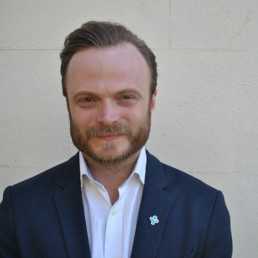
Written by Dominic Arnall
Chief Executive of Just Like Us, the LGBT+ young people's charity.
Diverse families, kindness and respecting difference are all key elements of the primary curriculum that we’re probably all familiar with, but the reality of making these conversations LGBT+ inclusive may not always be so obvious or seem immediately possible.
At Just Like Us, the LGBT+ young people’s charity, we know that growing up LGBT+ is still unacceptably tough. LGBT+ school pupils are twice as likely to be bullied and the same anti-LGBT+ language and bullying also impacts pupils who aren’t LGBT+ but have LGBT+ families or are perceived to against the ‘norms’.
We often hear from primary school staff keen to make changes in their school so that pupils can better learn about the diversity of the world around them – including that some families have two mums or two dads.
So, we want to help all school staff on this journey. We know your time is limited and you may be nervous or unsure where to start with LGBT+ inclusion, so we produce ready-to-go, free resources for primary and secondary schools.
Ahead of School Diversity Week, Just Like Us is releasing a new series of primary storytime resources.
The first in our series is a video of award-winning author Harry Woodgate reading from their book Grandad’s Camper, that you can screen with your primary class.
Grandad’s Camper won the Waterstones Children’s Book Prize Best Illustrated Book 2022 and is a wonderful book to start conversations with your pupils about families that aren’t heteronormative, or the ‘typical’ family set up.
The book follows the story of a girl and her grandad who takes them on a special campervan trip, sharing heartwarming stories of his adventures with the late Gramps, Grandad’s partner who passed away.
Alongside our storytime video resource, we have a reading guide with discussion prompts and ideas on how to use the book as a writing prompt – such as ‘How do you think Grandad and Gramps felt when they went on all their travels?’ and ‘How do you think Grandad feels now Gramps isn’t there any more?’
The resources are free to access for all UK primary school staff – simply sign up for School Diversity Week to download them.
We’re delighted to be working with Harry Woodgate and Andersen Press to open up much-needed conversations around diverse families in primary schools this School Diversity Week, and hope the resources are helpful to primary staff looking to celebrate diverse families.
We’ll also be giving away copies of Grandad’s Camper to UK primary school staff who sign up for School Diversity Week before the end of May 2022.
School Diversity Week is the UK-wide celebration of LGBT+ equality in primary and secondary schools run by charity Just Like Us and takes place 20-24 June this year.
Review of Diverse Educators: A Manifesto, ed Hannah Wilson and Bennie Kara (University of Buckingham Press, 2022)
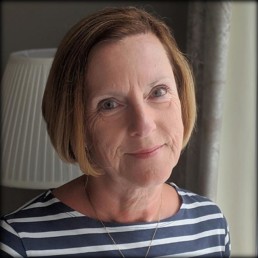
Written by Dr Jill Berry
Thirty years teaching across six different schools in the UK, state and independent, and was a head for the last ten. Has since completed a doctorate and written a book.
This book is a collaborative tour de force. Rarely have I read anything which has made me think as much as this book has. Tapping into the experiences of a wide range of writers whose lives have been, in so many ways, quite different from my own, has been sobering, humbling but ultimately energising. This book deserves to be widely read, robustly discussed and, crucially, its key messages need to be acted upon so that we work to change our world for the better – for everyone.
I appreciate that this is not necessarily a book most people would read from cover to cover. It is a weighty tome! It devotes one section to each of the nine protected characteristics, adds a chapter on intersectionality, a prologue and an epilogue. It is an amazing accomplishment, bringing together the views of 125 contributors, including the ten chapter editors, and Hannah and Bennie, who all share their stories and their perspectives. The book goes far beyond the exploration of personal stories, however.
I imagine that many people would identify a specific section, or several sections, about which they wished to develop their knowledge and understanding, and would focus on that part of the book. But I want to advocate for reading it all. Even if you feel that there are certain characteristics that you believe you fully understand and appreciate – perhaps you share them – I suggest that every section has something to teach us. And as you make your way through each separate section, you appreciate the connections, the echoes and the common ground, reinforcing the essential humanity which underpins this story of ‘difference’. As Bennie says in our Myatt & Co interview about the book: ‘No-one is just one thing.’
The range of contributors is one of the reasons this book resonates. Different contributors ranging from teenagers to the considerably more mature contingent; UK and overseas perspectives; primary, secondary and FE educators; state and independent sector teachers and leaders; many who share a number of protected characteristics offer their experiences, views and their own learning with generosity, honesty and courage.
Many of the stories are strongly grounded in research, and the book contains a great number of references, on which the contributors draw and which they share for those who wish to explore further through additional reading. It is also eminently practical, with key takeaways, key questions and specific commitments at the end of each chapter and a final section in which Bennie and Hannah make clear how readers can act on their reflections as they have worked through the different sections and what they have learnt as a result. They exhort us to consider: what difference will this make? It made me think of Zoe and Mark Enser’s words in ‘The CPD Curriculum’: “CPD does not happen through a particular input of information; CPD occurs through what happens next.” When you get to the end of the book, you are strongly encouraged to think about what action you will take as a result of the experience.
I strongly recommend ‘Diverse Educators: A Manifesto’. Bennie Kara’s words in the epilogue mirrored perfectly my own response to the book: “Throughout the book, I have been struck by the honesty of the contributing authors… I have seen in the writing parts of myself – feelings, thoughts and experiences that have served to demonstrate how we as education professionals have complex and interweaving experiences…In reading these chapters, even if I do not share a particular person’s protected characteristic, I have recognised the intensely human need to be heard.”
I would encourage you to make the time to read the whole book. I am confident that you won’t regret it.
We (Still) Need to Talk About Gender
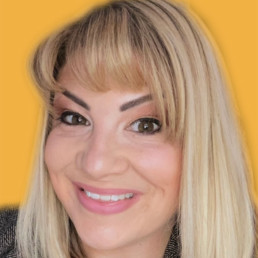
Written by Tracey Leese
Tracey Leese is an assistant headteacher, literacy specialist, parent governor and advocate for women in leadership. Tracey lives in Staffordshire with her two sons and fellow-teacher husband.
I am well aware that the land of gendered identities is an area in which attitudes and assumptions are rapidly changing… and that we are collectively beginning to see gender as more of a spectrum than a fixed binary position. But in our continued efforts to renegotiate our shared understanding of what constitutes gender or identity we can’t assume that female teachers are no longer subject to prejudice.
Women are not underrepresented in teaching – in fact it’s a female-centric profession, but we are underrepresented at every single level of educational leadership – most prevalently at Secondary Headship level. In comparison to some other protected characteristics the issue of gender seems so straight forward. I can see why some people might feel that it’s time to put the issue of gender to the bottom of the priority list.
Similarly, it’s easy to underestimate the myriad reasons why women still earn and lead less in what is supposed to be a truly equal and ethical profession. The motherhood penalty, work/ life balance and women’s desire to work flexibly are all seemingly widely-held reasons for this. Together with my brother Christopher, I recently co-authored Teach Like a Queen: Lessons in Leadership from Great Contemporary Women as an attempt to contribute to the ongoing conversation around diversity within school leadership. Throughout our research for the book we interviewed countless power women and were surprised when recurring themes of self-doubt, imposter syndrome and fear of disapproval emerged. In some instances, these female leaders cited seemingly “small” issues such as wishing to attend their child’s school nativity as reasons why leadership seems unattractive to women.
So, whilst we need to look at who is shaping policy and practice in education, we also need to be bold enough to imagine a future where more schools are ran by women and paid the same as their male counterparts. According to data from NAHT’s Closing the Gender Gap published December 2021, by the age of 60 male headteachers earn £17,334 more than female headteachers.
Our book was inspired (and supported by) the work of #WomenEd who are relentless in their work towards inspiring, empowering and supporting more women into leadership posts, the data tells us that in spite of the brilliant work already underway, that there is still so much work to do. So we absolutely cannot assume that the issue of gender is anywhere near resolved nor that the profession is as equitable as we’d hope.
We are all charged with addressing injustice in education – as leaders, as teachers and as stakeholders. The disproportionate representation of women in leadership and the gender pay gap absolutely amounts to injustice. Our students deserve to attend schools which are led by visionary and diverse leaders. So if a world without gender inequality is an unrealistic destination, I am just happy to be part of the journey.
Teach Like a Queen is out 30th May and published by Routledge: www.routledge.pub/Teach-Like-a-Queen

